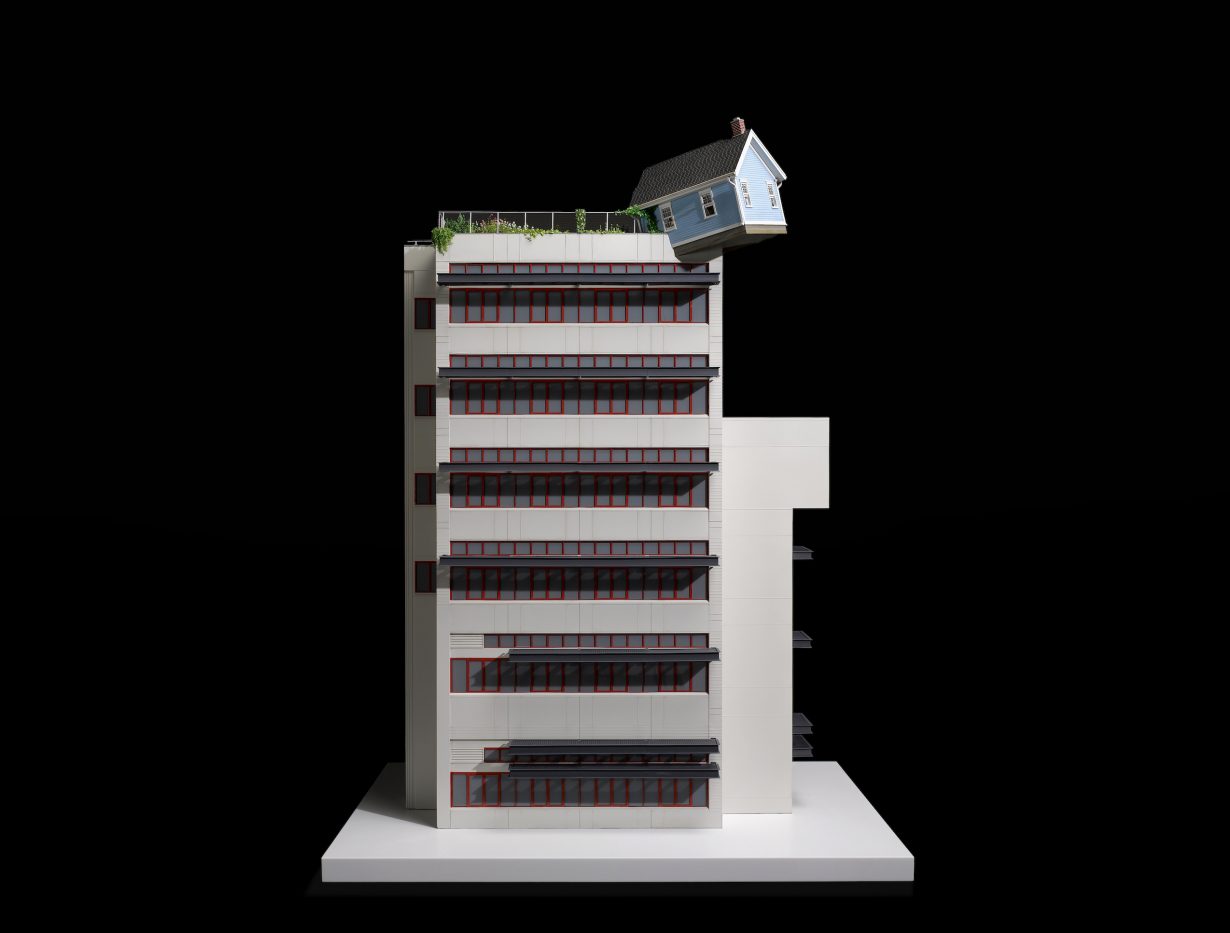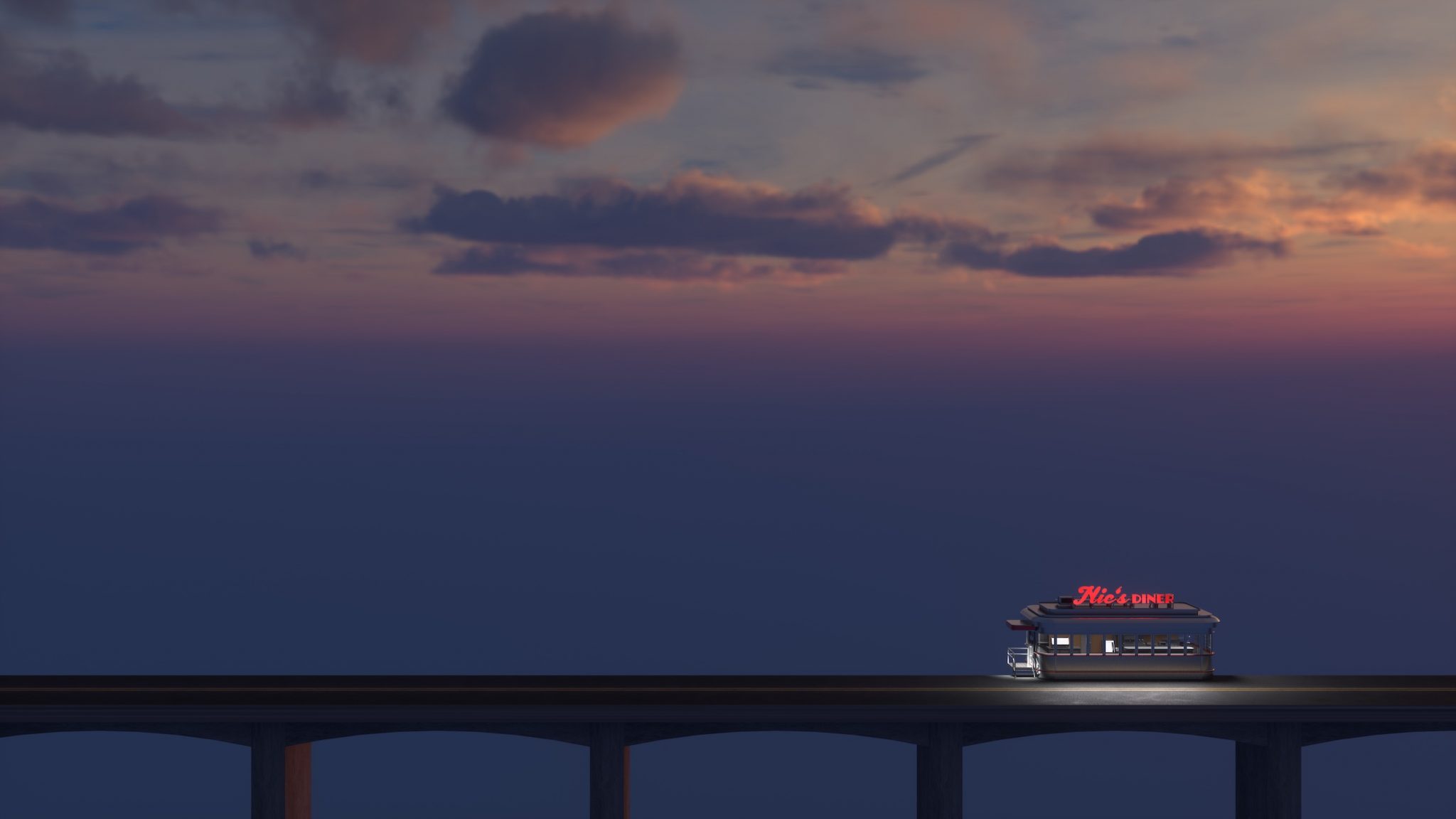“We constantly change our built environments. We’re not just passively living in a space”
Korean artist Do Ho Suh held his first solo exhibition at the Art Sonje Center, Seoul, in 2003. This autumn he returns there with Speculations, an exhibition that brings together previously existing works with a new series of drawings, models and animations that depict the ideas and processes informing Suh’s practice. Known for his explorations of place, in particular largescale installations of building interiors made from cloth, Speculations incorporates unfinished and unrealised works. Alongside new elaborations of The Bridge Project (2010–), in which the artist has collaborated with anthropologists and structural engineers to propose a hypothetical dwelling that locates itself equidistantly between London, New York and Seoul, the three cities he considers home – are sketches and plans from across his career, exploring the many forms an idea might take.

Impossible Projects
ArtReview Given your approach to installation, and your past experience within the Sonje itself, how does this exhibition make use of the centre?
Do Ho Suh It’s on all three floors. The show in 2003 was relatively site-specific; for this time, I think I was more relaxed. I didn’t pay too much attention to the building, I just was able to focus on the contents.
AR It’s called Speculations, which provides an umbrella title for the work presented. Do you find it hard for them to remain ‘speculations’ as they become seen and known and written about?
DHS I think that a lot of projects or pieces in the show are still ongoing. For example, the Bridge Project I don’t think has an ending. I already have additional contents that I would like to add after the Sonje show, we just couldn’t fit those elements in there.
The concept of this Speculation project probably gelled in around 2003, 2004. That’s the point where I thought, ‘Oh, I think I should visualise these ideas’, which I’d been keeping in my sketchbook. I’ve kept the same format sketchbook since 1991, when I was an undergraduate student at RISD [the Rhode Island School of Design]. I have maybe 50 sketchbooks. I actually discovered the beginning of the Speculations projects from one of the oldest sketchbooks, small doodlings here and there. Then I completely forgot about it. The images keep coming back in later sketchbooks. They kept accumulating, until I realised that up to 15 different ideas were there. By that time, I had been showing my fabric architecture pieces quite extensively. I realised that people thought that the fabric architecture pieces were all I was doing, but that was not the case.
The fabric pieces, in my mind, are just the tip of the iceberg. I started to think that maybe I had been focusing more on complete works, and that I should share the process – like in the ways the architects present their works, with drawings and architecture models. A lot of the Speculations ideas are basically impossible to realise. For many reasons: like the scales are just too great, or something that defies gravity, or just too expensive to make. I have to come up with a medium that explains the idea; it just ends up being very much like an architecture exhibition, then I started to make animations as well.

More Fun to Dream
AR There’s the idea of something that might be built and the reality of the built thing itself. Along the way things change, for numerous reasons. Some architects might change their models and their sketches to suit the reality of the end results. After all, a client won’t want a sketch or a model for a building that’s completely different from what they ended up with. Did you do any of that editing when you’re presenting?
DHS The thing is, some of ideas in the Art Sonje show have been realised. Some projects that were not, in my mind, possible to make have happened. For example, one original idea in my sketchbook was a little house sticking onto the side of a tall building. The actual piece is on the rooftop of the building. The concept was pretty much the same. The opportunity came along because I put these ideas into the world. Making this exhibition, I just realised how important it is to visualise your ideas, for my sake as well. That process helps you to hone and develop your ideas further. I think the opportunity has been coming to realise that.
AR What is the difference between modelling an idea – as in, making a model – and making the models into, for want of a better word, reality?
DHS The reality part is always a pain. That’s something that you don’t want to really deal with.

AR Would you be happy if everything just existed as a model?
DHS I have to say, the process of formulating my ideas, speculating all the possibilities and daydreaming, that’s the best part of being an artist, in my mind. Because that’s the only place or space that I can have total freedom. No responsibility whatsoever. I really enjoy that part. I think a lot of artists are probably pretty much the same. Even making models from my idea, it instantly changes the mode of my behaviour in a way. It’s less fun. Though working on smaller-scale models is fun too, because as a child I used to build a lot of model kits and played with smaller-scale things. I don’t know how to articulate the feeling, but it’s kind of like that childhood experience has given me the skills to continue playing with the modelmaking.
AR Do you think that aspect of play is the difference? When you make a model for something, it’s not asserting that this is the absolute and final outcome. Whereas when you make something in the real world, to some degree, that is final.
DHS Yes – some of the ideas I have made several different versions of the models, and I’m just playing with that. Now that we have 3D printing, it’s really easy to visualise ideas. Animation is also quite interesting for me, as it adds an element of time. I think my work, ultimately, is about the moment. I always found I’m not 100 percent satisfied with my sculptural installations, because even though it looks like a static or stationary piece, I always see them as moving things, and that the movements of the viewers activate the piece. I don’t think it is as effective as, for example, time-based art.

AR It feels that you’ve always seen form as something that’s animate and animated: walking through sculptures or even seeing models is a process, and the form is shifting for various reasons. A lot of your work does work with the atmosphere around it, unlike architecture that’s designed to protect you from the vagaries of the atmosphere of our planet.
DHS The same piece might be shown in different museums, and physically it’s the same. When the surroundings changes, the energy shifts. Especially the translucent fabric pieces. You not only see the work itself, but you see the people who are looking at the piece and at you from the other side of the piece. Still, it’s physically grounded in a way – that’s why I became more interested in making films and animations.
AR Does showing in Seoul feel different, as a sort of homecoming?
DHS No, not much. The thing is, I never felt that I left Korea, even though I’ve lived longer outside of Korea. I think it’s a part of getting old as well. Though with this exhibition, I feel like I have a totally new audience, because they probably haven’t seen my work in person. That’s really exciting.

The Life of Buildings
AR With your work, a lot of it is about a relation between people and buildings. Which do you think shapes which? Do the buildings shape inhabitants or inhabitants shape buildings?
DHS I think it goes both ways. We constantly change our built environments as well. We’re not just passively living in a space. Not many people can afford to build their own home, for example. We live in a house that someone else has built or someone else lived in, but we’re constantly trying to change things to make ourselves comfortable or whatever.
AR A fundamental issue that comes up with your work is that of agency, in terms of: what agency we do have to shape the environment around us? And is that through memory or physical actions? Such issues also feel part of the condition of people who migrate from places.
DHS As I got older, I started to notice that my parents’ place, where I grew up, was also getting old, especially when my father passed away. I think I experienced a similar thing when my landlord in New York passed away: the building was literally falling apart and it started to release strange sounds and smells that I hadn’t experienced before.
At my parents’ place, there are very tall pine trees in the garden. Then I noticed that the roots of the pine trees had started coming up out the surface of the ground. It’s strange why that is happening all of a sudden after my father’s gone. It’s as if they’re angry, not quiet and gentle anymore, because my father used to really look after them. He spent like three hours every day in the garden, picking pine needles. It was a meticulous garden, but then different things started to come out. There’s something about how the energy around the house has shifted.
Speculations is on view at Art Sonje Center, Seoul, through 3 November
